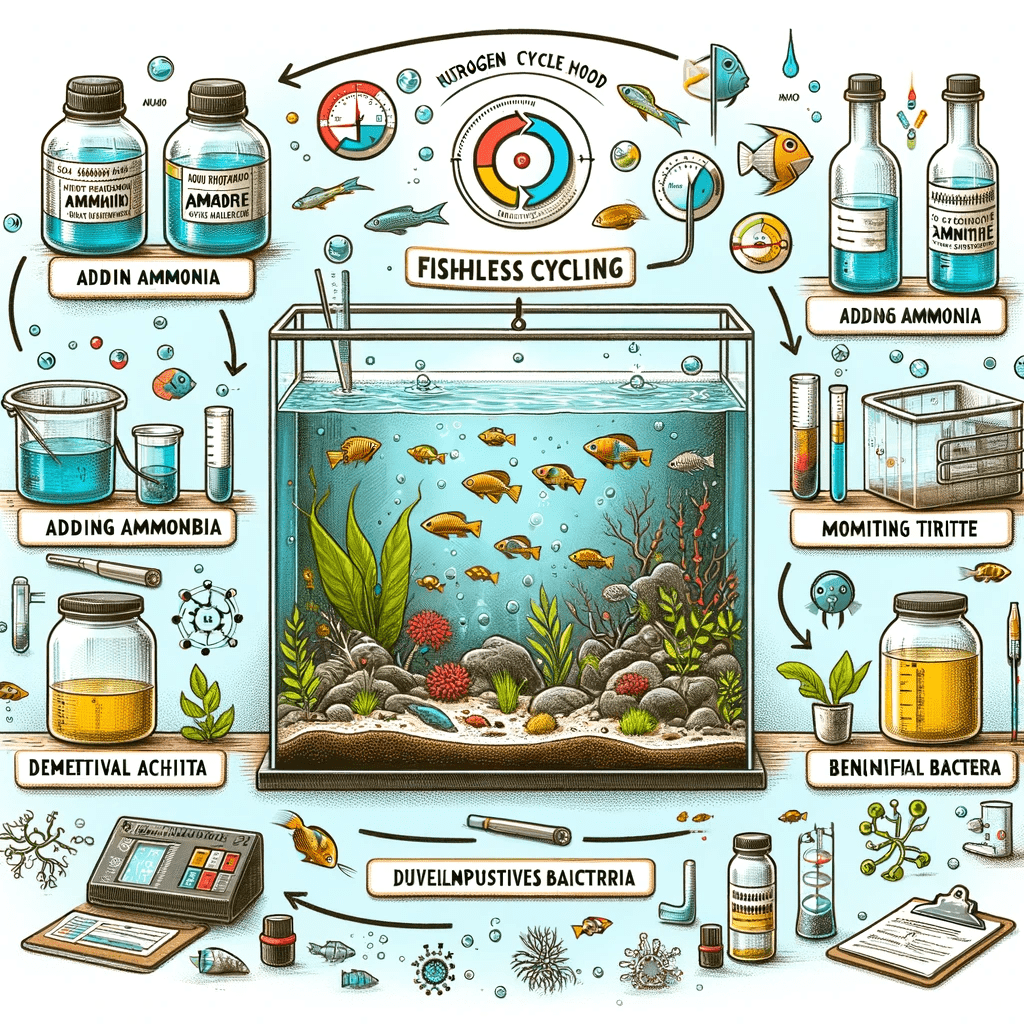Fishless Cycling: The Humane Alternative to Aquarium Setup
Fishless Cycling: A Compassionate Approach to Starting Your Aquarium
Fishless cycling has emerged as a popular and humane alternative to traditional fish-in cycling for setting up new aquariums. This method not only spares fish from the stress and potential harm of cycling with them in the tank but also provides a stable and healthy environment for when you finally introduce your aquatic pets. In this blog post, we explore the process, benefits, and steps to successfully perform fishless cycling.
What is Fishless Cycling?
Fishless cycling is the process of establishing a biological filter in your new aquarium without using fish to produce the ammonia needed to start the nitrogen cycle. Instead, ammonia is added directly to the tank through chemical sources, such as ammonia chloride or by decomposing fish food. This method encourages the growth of beneficial bacteria that convert ammonia into nitrites and then nitrates, essential for a healthy aquarium.
Benefits of Fishless Cycling
- Humane to Fish: Eliminates the risk of fish mortality or stress from exposure to toxic ammonia and nitrite levels.
- Control Over Ammonia Levels: Allows for precise control over ammonia levels, ensuring optimal conditions for the growth of beneficial bacteria.
- Faster Cycle Time: Often results in a quicker cycle since ammonia levels can be kept consistently high to speed up bacteria growth.
- Healthier Environment: Results in a more stable and healthier environment for fish when they are finally introduced.
How to Perform Fishless Cycling
- Prepare Your Aquarium: Set up your aquarium with all necessary equipment, including a filter, heater, and any decorations or substrates.
- Add Ammonia Source: Introduce ammonia to the tank. This can be done by adding pure ammonia chloride or by allowing fish food to decompose in the tank.
- Monitor Water Parameters: Use a water test kit to regularly check the levels of ammonia, nitrites, and nitrates. Adjust the ammonia levels as necessary to keep them within optimal ranges for bacteria growth.
- Wait for the Nitrogen Cycle to Complete: This involves waiting for ammonia and nitrite levels to rise and then fall to zero, while nitrate levels increase, indicating that beneficial bacteria colonies are established.
- Perform a Large Water Change: Once the cycle is complete, perform a large water change to reduce the nitrate levels before introducing fish.
Tips for Success
- Patience is Key: Fishless cycling can take anywhere from 2 to 6 weeks. Patience and regular monitoring are essential.
- Keep Ammonia Levels Controlled: Too much ammonia can inhibit bacteria growth. Maintain ammonia levels at 3-5 ppm for optimal results.
- Choose Quality Testing Kits: Reliable water testing kits are crucial for accurately monitoring your tank’s progress.
Conclusion: Setting the Stage for a Thriving Aquatic Ecosystem
Fishless cycling is a responsible and efficient way to prepare your aquarium for its future inhabitants. By following this method, you not only ensure a safer transition for your aquatic pets but also contribute to a more sustainable and ethical approach to aquarium setup.
Fishless cycling represents a significant advancement in aquarium care, offering a humane and effective way to establish your tank. Share this guide with fellow aquarium enthusiasts to promote the adoption of this eco-friendly method.


